Depending on the road conditions, Old Plank Road can be our favorite route to the lighthouse from our house. The road is fairly straight and since we live directly north of the lighthouse, it is definitely our most direct route. The pavement runs out at the county line, but thankfully, we have a paved option at that spot. Today we stuck with the dirt road. But after a rain and the big pickups have been playing on it, it becomes more than our spines and 2-wheel-drives are up for. Today it was actually not too bad as the road grader had been at work recently and the coast did not get the rain that we had this week. Still, there were the interesting spots.
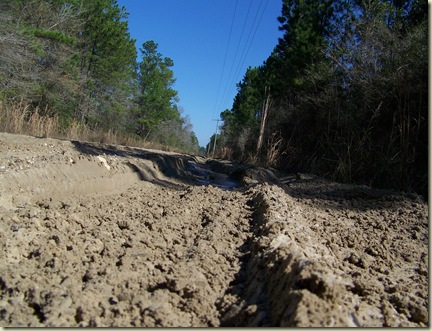
Old Plank is a road through forests that in many places are simply older planted pines. Cypress domes are sprinkled along the way. Few homes are seen but there are signs of hunt camps. Today, we came upon a fresh hog head in the ditch.
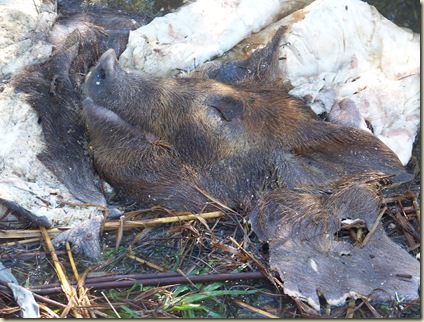
We saw two deer, and lots of tracks. Some were quite large. This is S's size 8 shoe for reference.
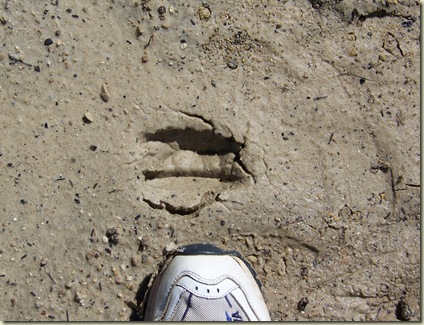
This is the road where we saw the black bear last summer.
In the fall, we gather wildflowers from along the roadsides: goldenrod, liatris, corn snakeroot, swamp sunflower, ironweed, ageratum, coreopsis, asters, saltbush, and rabbit tobacco. These flowers attract butterflies and there are plenty to enjoy.
Another of the resources found along the road is chert, the stone that is found locally that has been used as firestarter and arrowheads and spearheads.
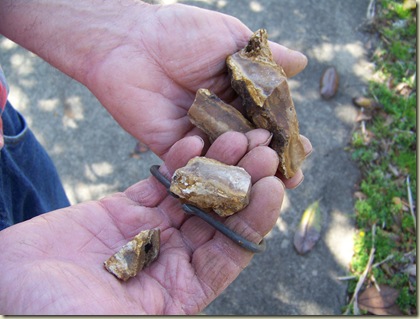
B is holding a forged iron striker that when hit on these rocks, sends off a spark which can be used to start a fire.
There are springs along the way that feed into the St. Marks River. The first one that we pass is at the intersection with Natural Bridge Road. It is known as Rhodes Spring. We used to walk along the stream there but now it is private land that is part of the Tallahassee Ranch Club: a ridiculous name for a housing development, as it is not in Tallahassee, it is not a ranch and with only a couple of houses, how can it be a club? Now we admire the spring from across the fence. The feeding spring is actually upstream. The water under this duckweed is going down the drain and will resurface some ways off and eventually make its way to the river.
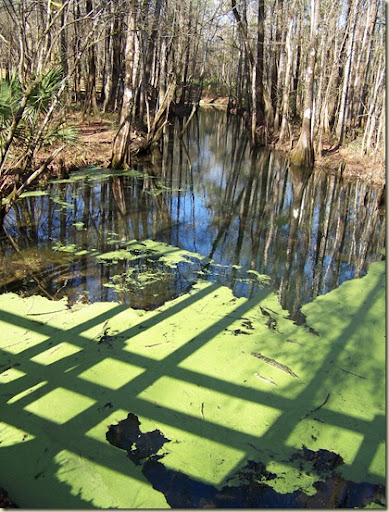
The second, we come to very close to the end of the road at Newport. This one is called Newport Spring or, sometimes, simply Sulphur Spring for the mineral and its odor that pervades the place. The water flows from a fissure in the limestone at the base of the concrete wall. This is a hangout for locals but this morning, we had it to ourselves. Guess it was early.
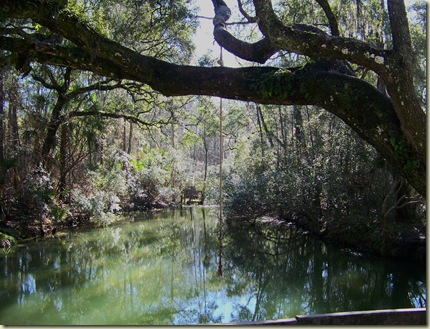
To their credit, there is very little litter though the place is popular.

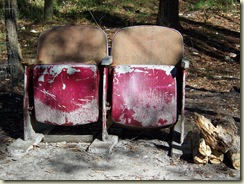
These theater seats have been there for years.
We do not go in the water as it is reported (by the State) to have a high bacteria count---and it looks like it.
Another popular spot is called the Bog where trucks and Jeeps come to play in the mud.
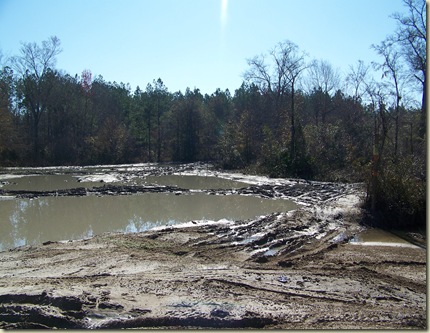
Old Plank Road has an interesting history---but that is for another day.

